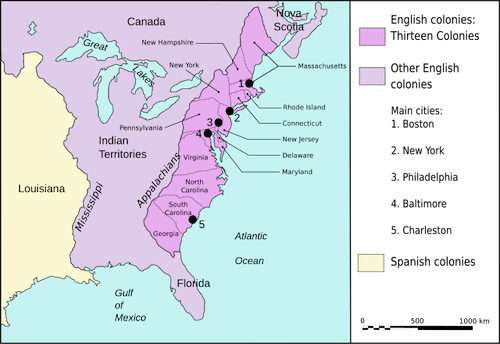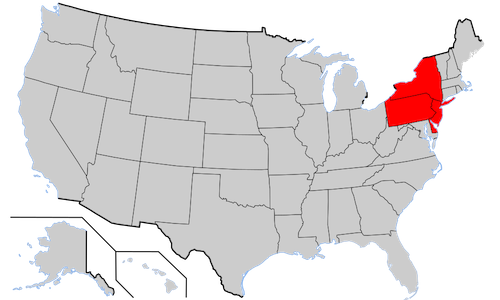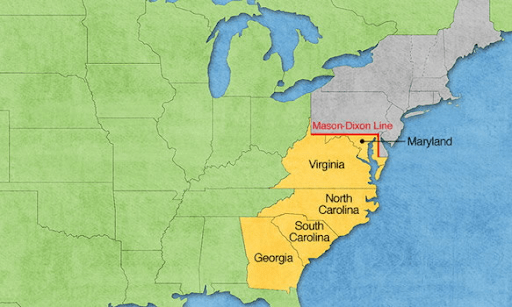
The thirteen British colonies were divided into three regions: New England, the Middle Colonies, and the Southern Colonies. Each region had its own geography, climate, and natural resources. These features shaped the economy of each region and influenced how people worked and used the land.
In the New England colonies, the land was rocky, and the soil was thin and difficult to farm. Winters were long and cold, which created a short growing season. These conditions made large-scale agriculture nearly impossible. As a result, colonists focused on using other natural resources. Forests provided timber for building and ship construction. The coastal location gave access to the Atlantic Ocean, which supported fishing, whaling, and trade. Many people earned their living by working in shipyards, selling fish, or crafting goods in small workshops. Towns developed near harbors, which made trade easier and helped port cities like Boston grow. Because farming was limited, most people lived in towns where trade and skilled labor were more important than raising crops.

The Middle Colonies had a much milder climate and more fertile soil. The land was good for growing grains such as wheat, corn, and barley. Farms were usually larger than in New England but smaller than Southern plantations. These farms produced large amounts of food, and the region became known as the breadbasket of the colonies. Wide rivers like the Hudson and Delaware made it easy to move crops and goods between farms, towns, and ports. The Middle Colonies also had forests and iron deposits, which supported lumber and metalworking industries. Many people worked in blacksmith shops, mills, or traded goods in cities. Philadelphia and New York became major economic centers where farm goods, tools, and other products were bought and sold. The combination of farming, trade, and manufacturing created a balanced and productive economy.

In the Southern Colonies, geography played the biggest role in shaping the economy. The region had rich soil, rolling hills, and a warm climate with long growing seasons. These features made it ideal for growing cash crops such as tobacco, rice, and indigo. To grow and harvest these crops, colonists built large plantations. These plantations needed a large labor force, which was first made up of indentured servants and later of enslaved Africans. Plantations were often far apart from each other, and small towns were less common. Wealthy planters relied on nearby rivers and ports, like Charleston, to ship goods to Europe. Smaller farmers also existed, but they focused on feeding their families rather than trading for profit. Agriculture dominated the Southern economy, and success depended heavily on land, labor, and access to markets.

Each colonial region used its land and resources differently, creating three distinct economies that shaped life in early America.
